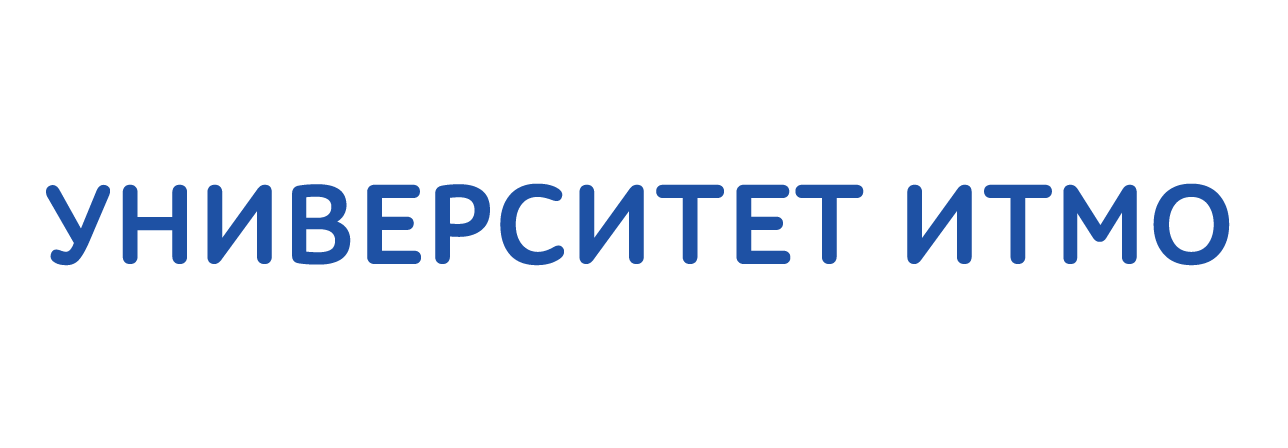Меню
Публикации
2025
2024
2023
2022
2021
2020
2019
2018
2017
2016
2015
2014
2013
2012
2011
2010
2009
2008
2007
2006
2005
2004
2003
2002
2001
Главный редактор

НИКИФОРОВ
Владимир Олегович
д.т.н., профессор
Партнеры
doi: 10.17586/2226-1494-2024-24-6-880-891
УДК 543.4, 551
От триасового периода к современности: спектроскопия комбинационного рассеяния света для дифференциации ископаемых смол различного возраста
Читать статью полностью
Язык статьи - русский
Ссылка для цитирования:
Аннотация
Ссылка для цитирования:
Зюбин А.Ю., Кундалевич А.А., Зозуля А.С., Богдасаров М.А., Демишкевич Е.А., Самусев И.Г. От триасового периода к современности: спектроскопия комбинационного рассеяния света для дифференциации ископаемых смол различного возраста // Научно-технический вестник информационных технологий, механики и оптики. 2024. Т. 24, № 6. С. 880–891. doi: 10.17586/2226-1494-2024-24-6-880-891
Аннотация
Введение. Представлены результаты исследований ископаемых смол различного геологического возраста и географического происхождения. Предложен новый метод спектрального анализа для дифференциации ископаемых смол по возрасту от триасового периода до современности, позволяющий спектрально отличить ископаемые смолы друг от друга. Впервые получены спектры комбинационного рассеяния света для ископаемой смолы позднего триасового периода. Показана возможность применения метода для дифференциации смол от позднего триасового периода до современности. Метод. Исследования выполнены методом спектроскопии комбинационного рассеяния света. Спектры получены с использованием спектрометра Renishaw Virsa (Великобритания) для длины волны 785 нм и портативного спектрометра комбинационного рассеяния света Raport 1064 (Россия) для 1064 нм. Диапазон исследованных спектров 400–3200 см–1. Изучено 27 образцов ископаемых смол Евразии, Африки, Америки, Австралии. Основные результаты. По результатам исследований образцов ископаемых смол различного географического местоположения и возраста установлены различия в величинах отношения колебательных мод валентного скелетного колебания (ν(С=С)) и деформационного колебания группы СH2 (σ(СH2)) в диапазонах волновых чисел 1650–1600 см–1 и 1440–1460 см–1 соответственно у ископаемых смол в возрасте от триасового периода до современности. Установлено, что с увеличением возраста смолы, степень их полимеризации уменьшается. Для смолы возраста триасового периода показано отсутствие сигналов ν(СH2, СH3) в высокочастотной области для лабданового каркаса, что свидетельствует о крайне низкой степени полимеризации структуры. Обсуждение. Полученные результаты потенциально позволяют применять метод комбинационного рассеяния света для дополнительной дифференциации возраста ископаемых смол, в случае ограничения применения метода радиоуглеродного анализа по возрасту (40 000 лет). Преимуществом предложенного метода является возможность быстрого, с минимальной пробоподготовкой определения возраста ископаемой смолы возрастов триасового и раннего мелового периодов и современности. Вместе с точностью дифференциация возрастов ископаемых смол в диапазоне возрастов от позднего мелового периода до олигоценмиоцен пока остается низкой, что требует дополнительных исследований. Также на данном этапе развития метод не учитывает влияние условия окружающей среды: климата, растительности, условий фоссилизации, при которых происходили превращения живицы в смолу.
Ключевые слова: комбинационное рассеяние света, спектр, ископаемые смолы, геологический возраст
Благодарности. Работа выполнена при поддержке гранта Российского научного фонда № 23-22-10023 «Фундаментальные основы разработки нового метода оценки относительного возраста и географического происхождения ископаемых смол мира на примере балтийского янтаря».
Список литературы
Благодарности. Работа выполнена при поддержке гранта Российского научного фонда № 23-22-10023 «Фундаментальные основы разработки нового метода оценки относительного возраста и географического происхождения ископаемых смол мира на примере балтийского янтаря».
Список литературы
- Truică G., Teodor E., Litescu S., Radu G. LC-MS and FT-IR characterization of amber artifacts // Open Chemistry. 2012. V. 10. N 6. P. 1882–1889. https://doi.org/10.2478/s11532-012-0103-5
- Xing Q.Y., Yang M., Yang H.X., Zu E.D. Study on the gemological characteristics of amber from Myanmar and Chinese Fushun // Key Engineering Materials. 2013. V. 544. P. 172–177. https://doi.org/10.4028/www.scientific.net/kem.544.172
- Chen D., Zeng Q., Yuan Y., Cui B., Luo W. Baltic amber or Burmese amber: FTIR studies on amber artifacts of Eastern Han Dynasty unearthed from Nanyang // Spectrochimica Acta Part A: Molecular and Biomolecular Spectroscopy. 2019. V. 222. P. 117270. https://doi.org/10.1016/j.saa.2019.117270
- Broughton P.L. Conceptual frameworks for geographic-botanical affinities of fossil resins // Canadian Journal of Earth Sciences. 1974. V. 11. N 4. P. 583–594. https://doi.org/10.1139/e74-053
- Cunningham A., Gay I.D., Oehlschlager A.C., Langenheim J.H. 13C NMR and IR analyses of structure, aging and botanical origin of Dominican and Mexican ambers // Phytochemistry. 1983. V. 22. N 4. P. 965–968. https://doi.org/10.1016/0031-9422(83)85031-6
- Langenheim J.H., Beck C.W. Infrared spectra as a means of determining botanical sources of amber // Science. 1965. V. 149. N 3679. P. 52–54. https://doi.org/10.1126/science.149.3679.52
- Pastorelli G., Richter J., Shashoua Y. Evidence concerning oxidation as a surface reaction in Baltic amber // Spectrochimica Acta Part A: Molecular and Biomolecular Spectroscopy. 2012. V. 89. P. 268–269. https://doi.org/10.1016/j.saa.2012.01.003
- Riquelme F., Ruvalcaba-Sil J.L., Alvarado-Ortega J., Estrada-Ruiz E., Galicia-Chávez M., Porras-Múzquiz H., Stojanoff V., Siddons P.D., Miller L. Amber from México: Coahuilite, Simojovelite and Bacalite // MRS Online Proceedings Library (OPL). 2014. V. 1618. P. 169–180. https://doi.org/10.1557/opl.2014.466
- Sonibare O.O., Agbaje O.B., Jacob D.E., Faithfull J., Hoffmann T., Foley S.F. Terpenoid composition and origin of amber from the Cape York Peninsula, Australia // Australian Journal of Earth Sciences. 2014. V. 61. N 7. P. 979–985. https://doi.org/10.1080/08120099.2014.960897
- Chekryzhov I.Y., Nechaev V.P., Kononov V.V. Blue-fluorescing amber from Cenozoic lignite, eastern Sikhote-Alin, Far East Russia: preliminary results // International Journal of Coal Geology. 2014. V. 132. P. 6–12. https://doi.org/10.1016/j.coal.2014.07.013
- Poulin J., Helwig K. Inside amber: New insights into the macromolecular structure of Class Ib resinite // Organic Geochemistry. 2015. V. 86. P. 94–106. https://doi.org/10.1016/j.orggeochem.2015.05.009
- Karolina D., Maja M.S., Magdalena D.S., Grażyna Ż. Identification of treated Baltic amber by FTIR and FT-Raman–a feasibility study // Spectrochimica Acta Part A: Molecular and Biomolecular Spectroscopy. 2022. V. 279. P. 121404. https://doi.org/10.1016/j.saa.2022.121404
- Xing Y.Y. Application of attenuated total reflectance infrared spectroscopy (ATR-FTIR) for amber identification and research // Guang Pu Xue Yu Guang Pu Fen Xi/Spectroscopy and Spectral Analysis. 2016. V. 36. N 7. P. 2066–2070. (in Chinese). https://doi.org/10.3964/j.issn.1000-0593(2016)07-2066-05
- Park J., Yun E., Kang H., Ahn J., Kim G. IR and py/GC/MS examination of amber relics excavated from 6th century royal tomb in Korean Peninsula // Spectrochimica Acta Part A: Molecular and Biomolecular Spectroscopy. 2016. V. 165. P. 114–119. https://doi.org/10.1016/j.saa.2016.04.015
- Wolfe A.P., McKellar R.C., Tappert R., Sodhi R.N., Muehlenbachs K. Bitterfeld amber is not Baltic amber: Three geochemical tests and further constraints on the botanical affinities of succinite // Review of Palaeobotany and Palynology. 2016. V. 225. P. 21–32. https://doi.org/10.1016/j.revpalbo.2015.11.002
- Havelcová M., Machovič V., Špaldoňová A., Lapčák L., Hendrych J., Adam M. Characterization of Eocene fossil resin from Moravia, Czech Republic: Insights into macromolecular structure // Spectrochimica Acta Part A: Molecular and Biomolecular Spectroscopy. 2019. V. 215. P. 176–186. https://doi.org/10.1016/j.saa.2019.02.058
- Cotton L.J., Vollrath F., Brasier M.D., Dicko C. Chemical relationships of ambers using attenuated total reflectance Fourier transform infrared spectroscopy // Geological Society Special Publication. 2017. V. 448. N 1. P. 413–424. https://doi.org/10.1144/sp448.22
- Sroczyński D., Malinowski Z. Spectroscopic investigations (FT-IR, UV, 1H and 13C NMR) and DFT/TD-DFT calculations of potential analgesic drug 2-[2-(dimethylamino) ethyl]-6-methoxy-4-(pyridin-2-yl)-1 (2H)-phthalazinone // Journal of Molecular Structure. 2017. V. 1150. P. 614–628. https://doi.org/10.1016/j.molstruc.2017.09.020
- Montoro O.R., Tortajada J., Lobato Á., Baonza V.G., Taravillo M. Theoretical (DFT) and experimental (Raman and FTIR) spectroscopic study on communic acids, main components of fossil resins // Spectrochimica Acta Part A: Molecular and Biomolecular Spectroscopy. 2020. V. 224. P. 117405. https://doi.org/10.1016/j.saa.2019.117405
- Kocsis L., Usman A., Jourdan A.L., Hassan S.H., Jumat N., Daud D., Briguglio A., Slik F., Rinyu L., Futó I. The Bruneian record of “Borneo Amber”: A regional review of fossil tree resins in the Indo-Australian Archipelago // Earth-Science Reviews. 2020. V. 201. P. 103005. https://doi.org/10.1016/j.earscirev.2019.103005
- Odriozola C.P., Garrido-Cordero J.A., Daura Luján J., Sanz M. Resin-coated beads in Iberian Late Prehistory (3rd–2nd millennia BCE) // Materials and Manufacturing Processes. 2020. V. 35. N 13. P. 1420–1423. https://doi.org/10.1080/10426914.2020.1750634
- Zhao T., Wang Y., Liu L., Li Y. Gemological and spectral characteristics of Mexican red blue amber // Guang Pu Xue Yu Guang Pu Fen Xi/Spectroscopy and Spectral Analysis. 2021. V. 41. N 8. P. 2618–2625. (in Chinese). https://doi.org/10.3964/j.issn.1000-0593(2021)08-2618-08
- Cockx P., Tappert R., Muehlenbachs K., Somers C., McKellar R.C. Amber from a Tyrannosaurus rex bonebed (Saskatchewan, Canada) with implications for paleoenvironment and paleoecology // Cretaceous Research. 2021. V. 125. P. 104865. https://doi.org/10.1016/j.cretres.2021.104865
- Musa M., Kaye T.G., Bieri W., Peretti A. Burmese amber compared using micro-attenuated total reflection infrared spectroscopy and ultraviolet imaging // Applied Spectroscopy. 2021. V. 75. N 7. P. 839–845. https://doi.org/10.1177/0003702820986880
- López-Morales G., Espinosa-Luna R., Frausto-Reyes C. Optical characterization of amber from Chiapas, Mexico // Proceedings of SPIE. 2013. V. 8873. P. 887311. https://doi.org/10.1117/12.2024701
- Rao Z., Dong K., Yang X., Lin J., Cui X., Zhou R., Deng Q. Natural amber, copal resin and colophony investigated by UV-VIS, infrared and Raman spectrum // Science China Physics, Mechanics and Astronomy. 2013. V. 56. N 8. P. 1598–1602. https://doi.org/10.1007/s11433-013-5144-z
- Pastorelli G., Shashoua Y., Richter J. Surface yellowing and fragmentation as warning signs of depolymerisation in Baltic amber // Polymer Degradation and Stability. 2013. V. 98. N 11. P. 2317–2322. https://doi.org/10.1016/j.polymdegradstab.2013.08.009
- Truică G., Ditaranto N., Caggiani M., Mangone A., Liţescu S., Teodor E., Sabbatini L., Radu G. A multi-analytical approach to amber characterisation // Chemical Papers. 2014. V. 68. N 1. P. 15–21. https://doi.org/10.2478/s11696-013-0415-8
- Havelcová M., Machovič V., Linhartová M., Lapčák L., Přichystal A., Dvořák Z. Vibrational spectroscopy with chromatographic methods in molecular analyses of Moravian amber samples (Czech Republic) // Microchemical Journal. 2016. V. 128. P. 153–160. https://doi.org/10.1016/j.microc.2016.04.010
- Cai L., Wang Y., Liu X., Huang Y. Spectroscopic characteristics of amber, copal resin and the improved derivatives // Huadong Ligong Daxue Xuebao/Journal of East China University of Science and Technology. 2020. V. 46. N 2. P. 227–233. (in Chinese). https://doi.org/10.14135/j.cnki.1006-3080.20190107002
- Colomban P., Franci G.S., Koleini F. On-site Raman spectroscopic study of beads from the necropolis of Vohemar, Northern Madagascar (>13th C.) // Heritage. 2021. V. 4. N 1. P. 524–540. https://doi.org/10.3390/heritage4010031
- Rygula A., Klisińska-Kopacz A., Krupska P., Kuraś E., del Hoyo-Meléndez J.M. The surface degradation of Baltic amber: The depth-profiling analysis and its application to historical object // Journal of Raman Spectroscopy. 2021. V. 52. N 1. P. 123–129. https://doi.org/10.1002/jrs.5942
- Dai L.-L., Shi G.H., Yuan Y., Jiang X., Liu W.Q.Influences on baltic amber spectral characteristics under thermal optimization with multiple conditions // Spectroscopy and Spectral Analysis. 2021. V. 41. N 4. P. 1300–1305. (in Chinese). https://doi.org/10.3964/j.issn.1000-0593(2021)04-1300-06
- Jehlička J., Edwards H.G.M., Villar S.E.J., Frank O. Raman spectroscopic study of the complex aromatic mineral idrialite // Journal of Raman Spectroscopy. 2006. V. 37. N 7. P. 771–776. https://doi.org/10.1002/jrs.1497
- Wang Y., Shi G.H., Shi W., Wu R.H. Infrared spectral characteristics of ambers from three main sources (Baltic, Dominica and Myanmar) // Guang Pu Xue Yu Guang Pu Fen Xi/Spectroscopy and Spectral Analysis. 2015. V. 35. N 8. P. 2164–2169. (in Chinese). https://doi.org/10.3964/j.issn.1000-0593(2015)08-2164-06
- Gaigalas A., Halas S. Stable isotopes (H, C, S) and the origin of Baltic amber // Geochronometria. 2009. V. 33. N 1. P. 33–36.https://doi.org/10.2478/v10003-009-0001-9
- Богдасаров М.А., Богдасаров А.А., Мартиросян О.В. Инфракрасная спектрометрия ископаемых смол из меловых отложений Болгарии //Вестник института геологии Коми научного центра Уральского отделения РАН. 2011. № 4(196).С. 15–17.
- Мартиросян О.В., Богдасаров М.А. Ископаемые смолы: диагностика, классификация и структурные преобразования в условиях термального воздействия //Вестник института геологии Коми научного центра Уральского отделения РАН. 2014. № 4(232). C. 10–15.
- Cockx P., Tappert R., Muehlenbachs K., Somers C., McKellar R.C. Amber from a Tyrannosaurus rex bonebed (Saskatchewan, Canada) with implications for paleoenvironment and paleoecology // Cretaceous Research. 2021. V. 125. P. 104865. https://doi.org/10.1016/j.cretres.2021.104865
- Pastorelli G., Shashoua Y., Richter J. Hydrolysis of Baltic amber during thermal ageing – An infrared spectroscopic approach // Spectrochimica Acta Part A: Molecular and Biomolecular Spectroscopy. 2013. V. 106. P. 124–128. https://doi.org/10.1016/j.saa.2012.12.072
- Pagacz J., Stach P., Natkaniec-Nowak L., Naglik B., Drzewicz P. Preliminary thermal characterization of natural resins from different botanical sources and geological environments // Journal of Thermal Analysis and Calorimetry. 2019. V. 138. N 6. P. 4279–4288. https://doi.org/10.1007/s10973-019-08157-0
- Peris-Díaz M.D., Łydżba-Kopczyńska B., Sentandreu E. Raman spectroscopy coupled to chemometrics to discriminate provenance and geological age of amber // Journal of Raman Spectroscopy. 2018. V. 49. N 5. P. 842–851. https://doi.org/10.1002/jrs.5357
- Naglik B., Mroczkowska-Szerszeń M., Dumańska-Słowik M., Natkaniec-Nowak L., Drzewicz P., Stach P., Żukowska G. Fossil resins–constraints from portable and laboratory near-infrared raman spectrometers // Minerals. 2020. V. 10. N 2. P. 104. https://doi.org/10.3390/min10020104
- Jehlička J., Jorge Villar S.E., Edwards H.G.M. Fourier transform Raman spectra of Czech and Moravian fossil resins from freshwater sediments // Journal of Raman Spectroscopy. 2004. V. 35. N 8-9. P. 761–767. https://doi.org/10.1002/jrs.1191
- Li X., Wang Y., Shi G., Lu R., Li Y.Evaluation of natural ageing responses on Burmese amber durability by FTIR spectroscopy with PLSR and ANN models //Spectrochimica Acta Part A: Molecular and Biomolecular Spectroscopy. 2023. V. 285. P. 121936.https://doi.org/10.1016/j.saa.2022.121936
- Brody R.H., Edwards H.G.M., Pollard A.M. A study of amber and copal samples using FT-Raman spectroscopy // Spectrochimica Acta Part A: Molecular and Biomolecular Spectroscopy. 2001. V. 57. N 6. P. 1325–1338. https://doi.org/10.1016/s1386-1425(01)00387-0
























